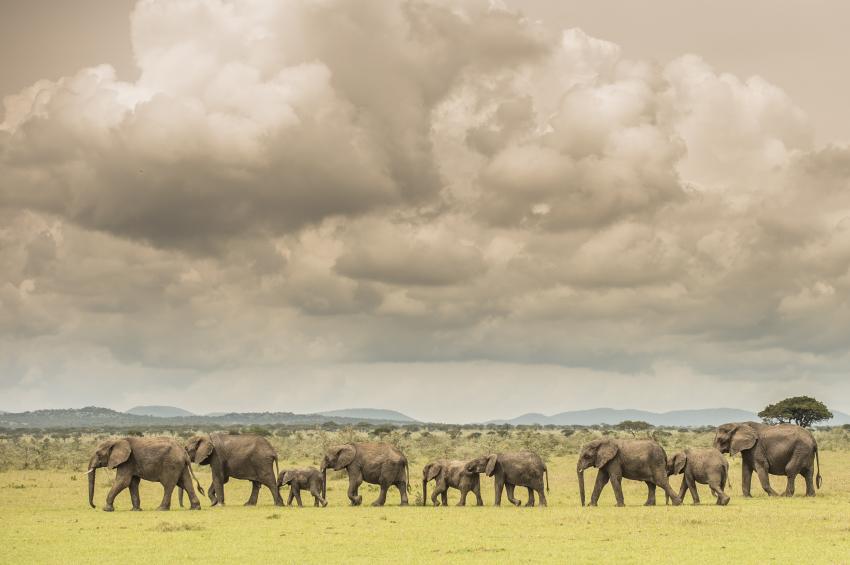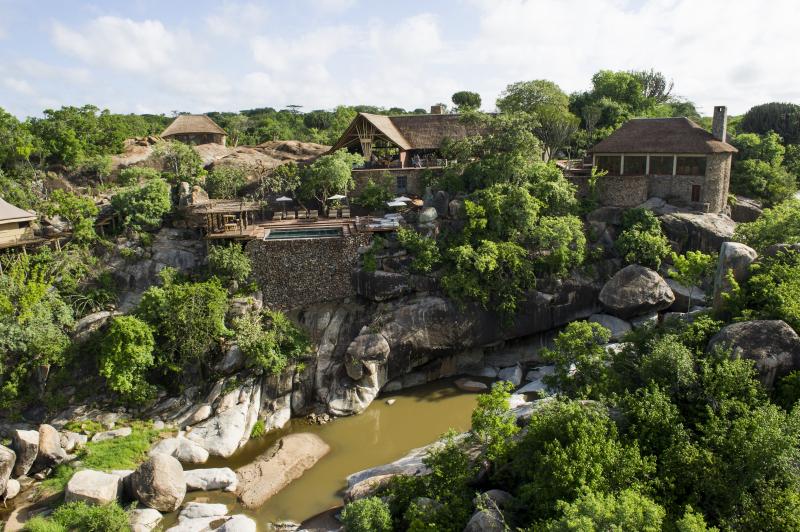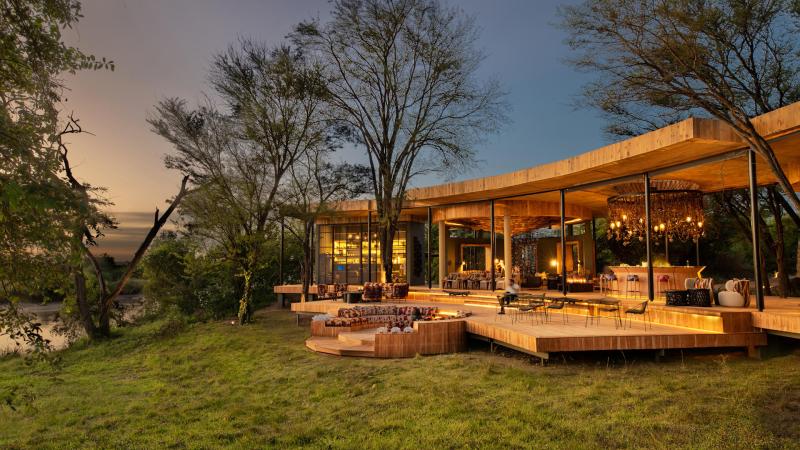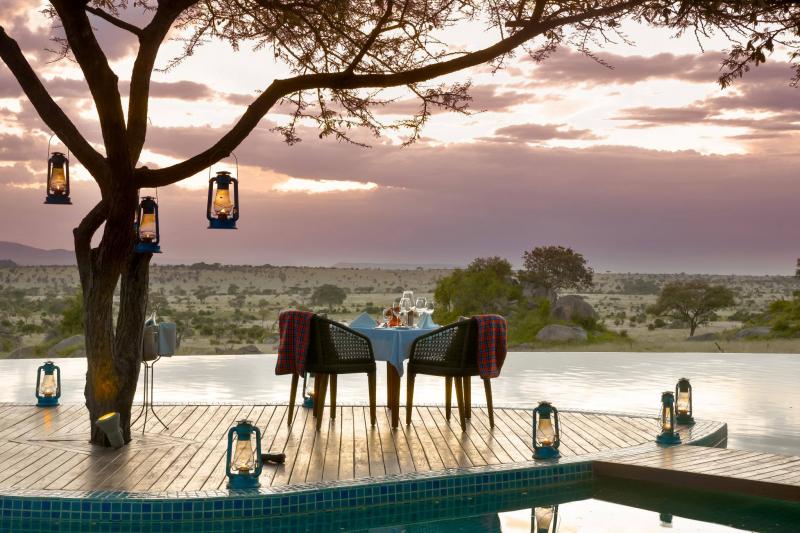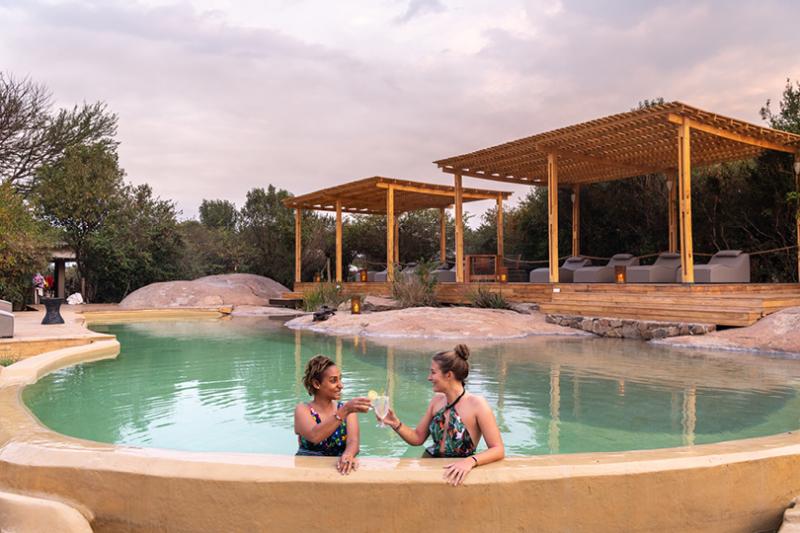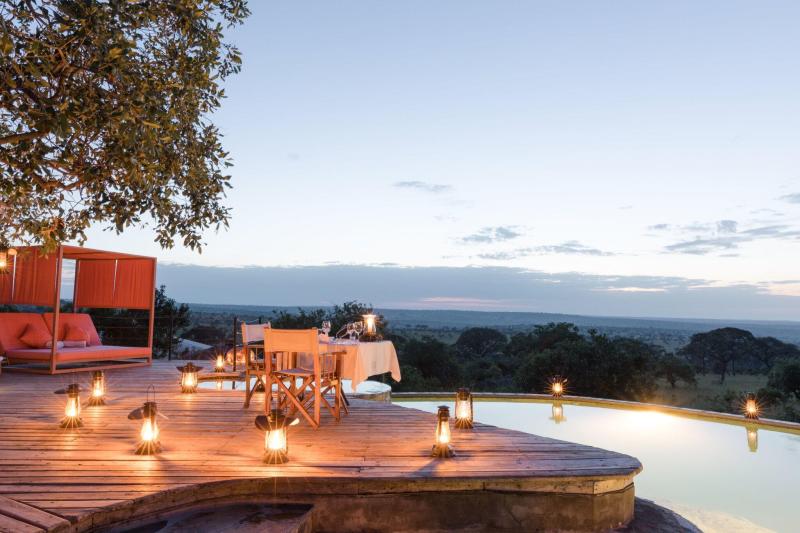Famed as the setting for the annual Great Wildebeest Migration, the Serengeti National Park nestles in the far north of Tanzania near its border with Kenya. It sprawls across more than 14,000 square kilometres of grassy plains, savannah, woodlands and riverine forests and supports one of the highest concentrations of big predators in Africa.
It’s an exhilarating destination to visit, with a wide variety of accommodation options ranging from wild camps to luxury lodges, as well as a myriad of ways to explore, including game drives, guided walks and hot air balloon safaris. The Serengeti is also within close proximity to other world-renowned wildlife destinations, such as the Ngorongoro Conservation Area, Tarangire National park and Lake Manyara National Park along what’s been dubbed the “Northern Circuit”

What animals can you see in the Serengeti National Park?
In addition to big-game predators such as lions, cheetahs and leopards, the Serengeti National Park becomes home to more than two million wildebeest during the annual migration season. They are joined by hundreds of thousands of zebra, Thompson’s and Grant’s gazelle, as well as topi and Coke’s hartebeest. Hippos, impala, warthog and Masai giraffe also call the park “home”, together with rarely-seen species of oryx, eland and dik-dik.
For those wanting to tick off the “Big Five”, the Serengeti is home to all of these species - lion, African leopard, African bush elephant, eastern black rhinoceros and African buffalo. Spotted hyena, serval and East African wild dog can also be spotted, together with vervet monkeys, olive baboons and black-and-white colobus along the Grumeti River forests.
Nile crocodiles inhabit many of the rivers, while black mambas, African pythons and chameleons will keep reptile enthusiasts entertained. Bird watchers will find no shortage of inspiration, with the Serengeti boasting more than 500 recorded species, including large birds such as Masai ostrich, lesser flamingos, marabou storks and vultures.

How to get to Serengeti National Park
The Kilimanjaro International Airport is the major gateway for visitors heading to the Serengeti National Park, with most safaris starting from Arusha, which is just under 50 kilometres drive from the airport. Alternatively, you can fly into the Julius Nyerere International Airport outside Dar es Salaam and take a domestic flight direct to the Arusha Airport.
From Arusha, you can either take a small plane to one of the airstrips that are dotted throughout the Serengeti National Park or make the 325-kilometre drive. Much of the journey will be on dirt roads and travelling through spectacular scenery, with wildlife sightings common along the way.
The route takes you through the Ngorongoro Conservation Area, with many travellers opting to spend a day or two exploring here before continuing on to the Seronera area of the Serengeti, which is around three hours away. It’s possible to drive one way and fly the other if you want to maximise your safari time or you can opt to continue exploring through the little-visited Tarangire and Lake Manyara National Park before returning to Arusha.

Best time to visit Serengeti National Park
No matter what time of the year you visit the Serengeti National Park, the wildlife viewing is exceptional, although certain areas of the park will be better during different periods because of rainfall patterns and the migration. The dry season from June to October is generally considered the best time to visit the Serengeti, with the thinner vegetation and limited water sources making wildlife easier to spot. It’s marked by sunny skies with little rain and few mosquitoes in the evenings.
June and July see the wildebeest migration in full swing and the park can get quite crowded as people flock to see this wildlife spectacle. These are the best months to see the wildebeest crossing the Grumeti River or you can plan your trip for August if you want to see the famous Mara River crossing. Lodge and camp rates tend to be at their highest and you should keep in mind that the mornings and nights can get very cold, so bring plenty of warm clothes.
November through to May is considered the wet season, with the grassy plains turning a lush green thanks to the short, afternoon showers, which seldom interfere too much with travel plans. Migratory birds flock from Europe and Asia to create a twitcher’s paradise while late-January to February is the best time to see the wildebeest calving.

Where to stay in the Serengeti
The Serengeti National Park is a truly vast area of land and deciding which region you should stay in can be confusing. Different areas of the park are at their best during different times of the year as the wildebeest migration make its way through. So if you’re hoping to track this wildlife spectacle, here’s where you should stay to be in the heart of all the action.

Ndutu Region
Situated in the southern Serengeti along the border with the Ngorongoro Conservation Area, the Ndutu region is one of the best places to stay from December through to March during the wildebeest calving season. Witness tens of thousands of young being born on the grassy plains, with opportunistic predators looking to take advantage of the wildebeest at their most vulnerable. Many of the lodges in the Ndutu region are seasonal and will close from April through to October.

Grumeti/Western Corridor
The wildebeest migration begins to make its way north along the Western Corridor during April and May before the animals are faced with their first challenge as they have to cross the Grumeti River. Because it’s the wet season, many of the luxury lodges and camps in this area reduce their rates, meaning you can get a great deal while seeing the migration in all its glory.

Central Serengeti
By June, the migration has crossed into the heart of the Serengeti’s Seronera region, which is one of the most popular areas of the park thanks to its large numbers of resident wildlife. While you can expect to see thrilling “kills” as lions, leopards and cheetahs take advantage of the hundreds of thousands of animals passing through, you’ll be paying top rates at the lodges and camps as countless other visitors hope to do the same. If you want to visit this region when it’s slightly quieter, consider booking for October or November when the migration makes its return journey south.

Northern Serengeti
The peak season continues from July to September as the migration moves into the Northern Serengeti and approaches the famous Mara River. There are numerous permanent lodges scattered throughout this region, together with a number of seasonal camps that open their doors to accommodate the influx of visitors.

Want to plan a safari in the Serengeti? Check out our unforgettable range of luxury lodges and camps.

 1-321-766-6821
1-321-766-6821 
